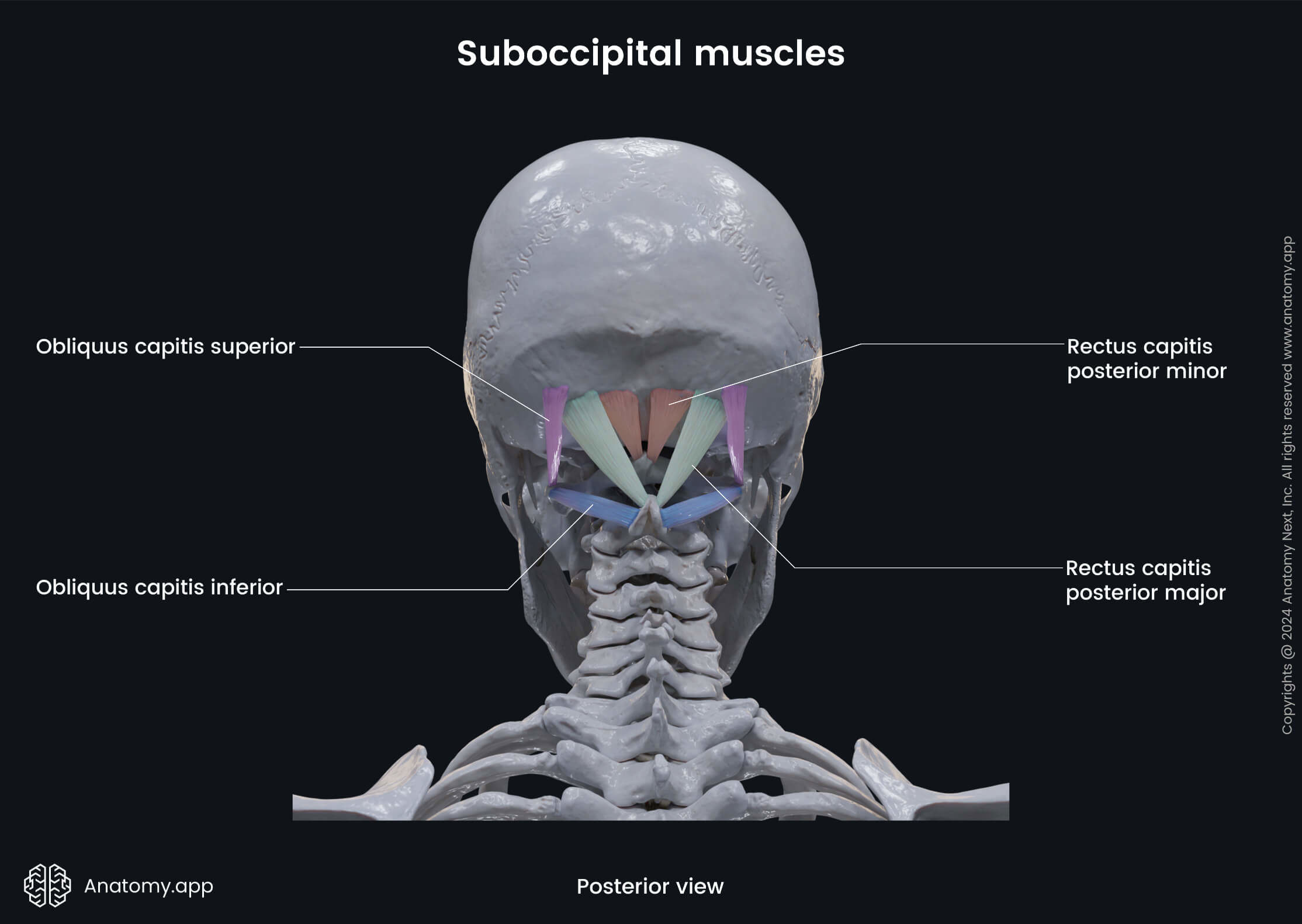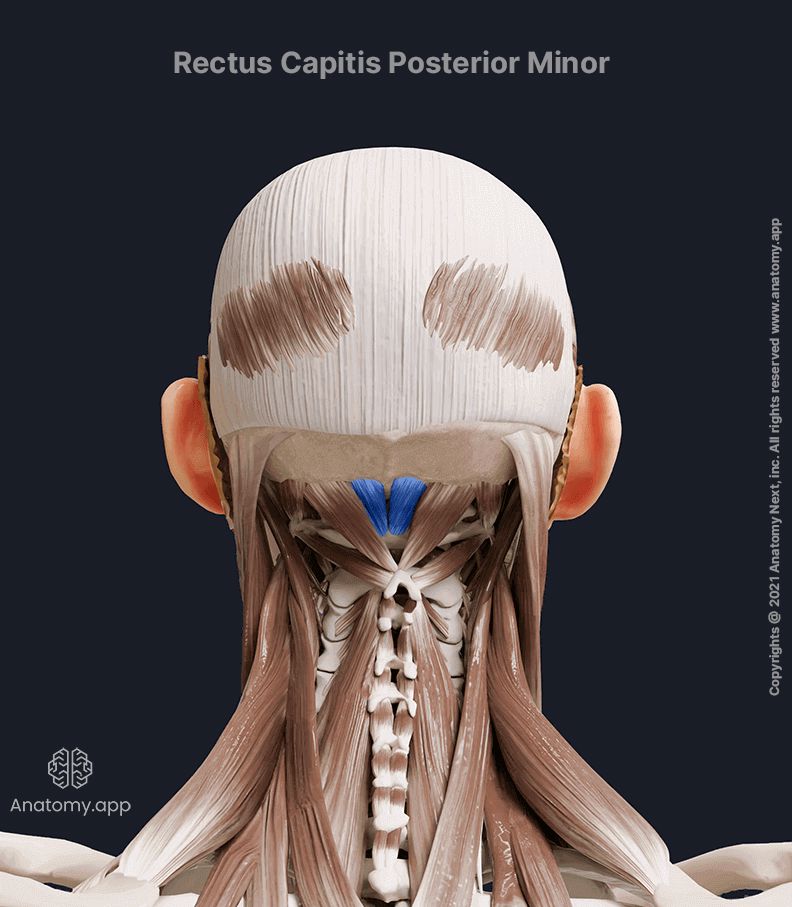- Anatomical terminology
- Skeletal system
- Joints
- Muscles
- Head muscles
-
Neck muscles
- Superficial neck muscles
- Scalene muscles
- Suprahyoid muscles
- Infrahyoid muscles
- Prevertebral muscles
- Suboccipital muscles
- Muscles of upper limb
- Thoracic muscles
- Muscles of back
- Muscles of lower limb
- Heart
- Blood vessels
- Lymphatic system
- Nervous system
- Respiratory system
- Digestive system
- Urinary system
- Female reproductive system
- Male reproductive system
- Endocrine glands
- Eye
- Ear
Rectus capitis posterior minor
The rectus capitis posterior minor (Latin: musculus rectus capitis posterior minor) is a small pyramid-shaped muscle of the neck. It is located in the posterior compartment of the neck. Therefore, the rectus capitis posterior minor is one of the posterior neck muscles. It is situated in the deepest layer of the group. As this muscle stretches below the occipital bone of the skull, it is classified as the suboccipital muscle. It acts at the atlanto-occipital joint.

| Rectus capitis posterior minor | |
| Origin | Posterior tubercle of atlas (C1) |
| Insertion | Medial aspect of inferior nuchal line of occipital bone |
| Action | Head extension |
| Innervation | Suboccipital nerve (posterior ramus of 1st cervical spinal nerve (C1)) |
| Blood supply | Branches of occipital and vertebral arteries |
Origin
The rectus capitis posterior minor muscle originates from the posterior tubercle of the atlas (C1).

Insertion
The fibers of the rectus capitis posterior minor insert on the external surface of the occipital bone - on the medial aspect of the inferior nuchal line.
Action
The primary function provided by the rectus capitis posterior minor muscle is the extension of the head.
Innervation
The rectus capitis posterior minor is innervated by the posterior ramus of the 1st cervical spinal nerve (C1), also known as the suboccipital nerve.
Blood supply
The rectus capitis posterior minor muscle receives arterial blood supply from the branches of the vertebral and occipital arteries.